Google Search Console (GSC) is a powerful, free tool that website owners and SEO professionals can use to monitor and optimize website performance in search results. With the ever-evolving landscape of search engine optimization, it’s crucial to stay ahead of the curve by leveraging GSC for SEO in 2023. In this blog post, we’ll dive into the essential features and strategies to make the most of Google Search Console for your website’s SEO success.

Setting Up and Verifying Your Website in Google Search Console
Before you can start optimizing your website with GSC, you’ll need to add and verify your site.
Here’s how to do it:
- Sign in to your Google Search Console account or create one if you haven’t already.
- Click “Add Property” and enter your website’s URL.
- Choose a verification method, such as HTML file upload, DNS verification, or Google Analytics, and follow the provided instructions.
- Once your website is verified, you’ll have access to valuable data and insights to improve your site’s SEO. (This could take a few hours for newer websites)
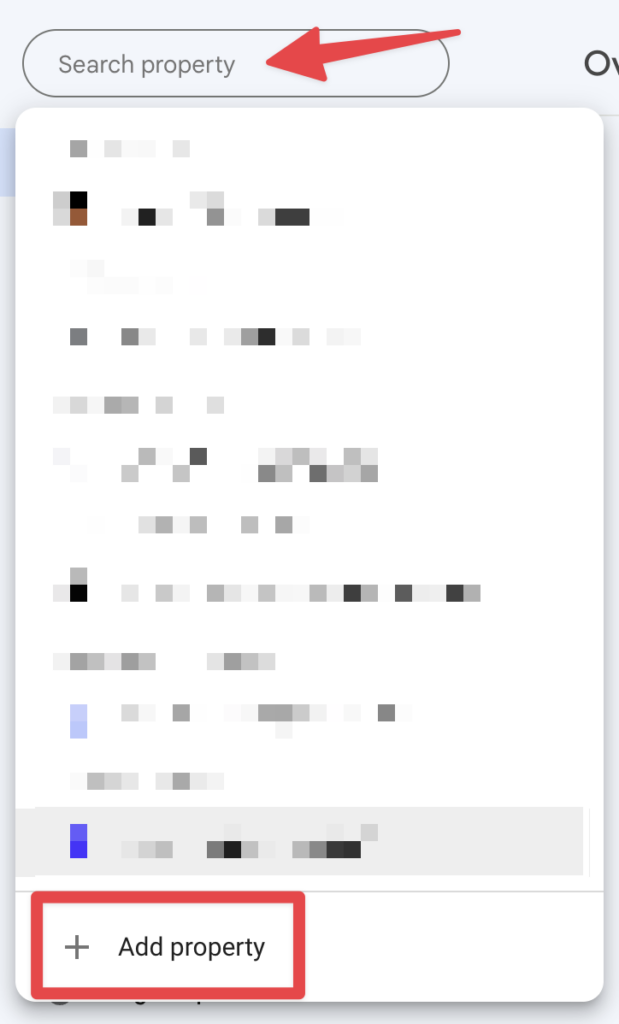
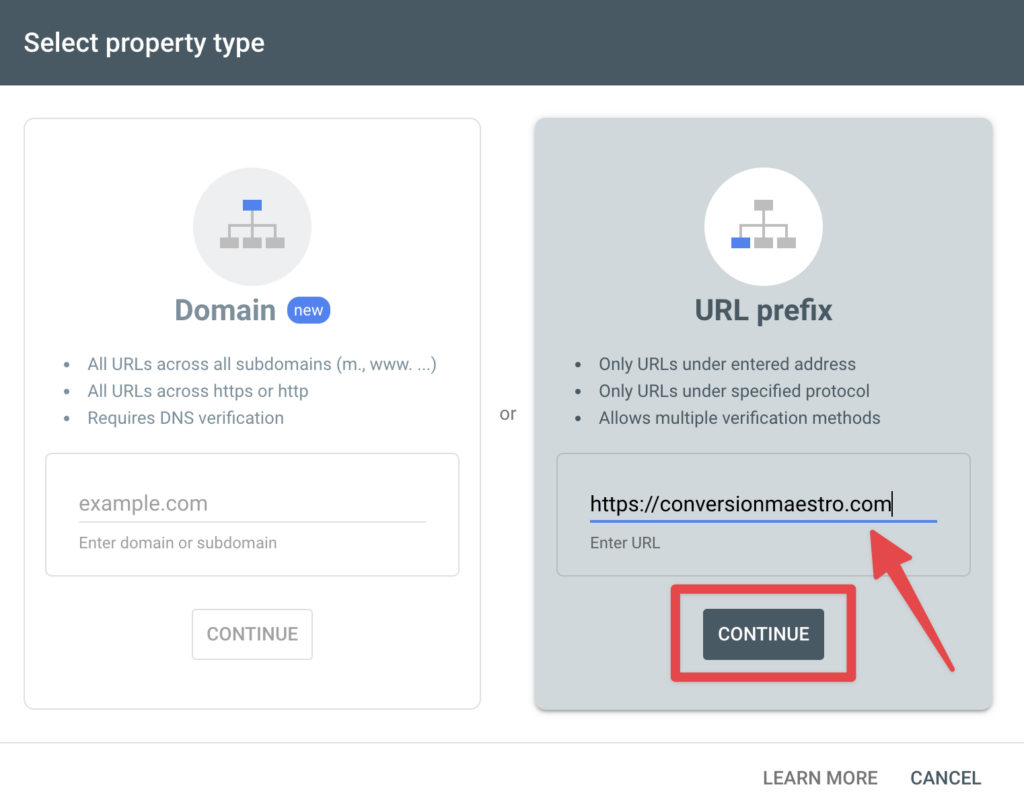
Understanding and Utilizing Key Features of GSC
Google Search Console offers several essential features for SEO, including:
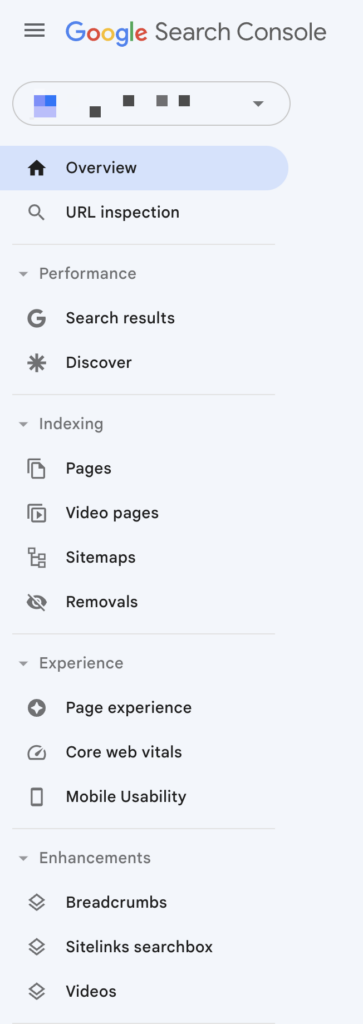
Main features
Overview: The Overview feature in Google Search Console displays a dashboard with essential data, including your website’s performance and current indexing status. This snapshot provides you with a quick understanding of your site’s health and areas that might need attention.
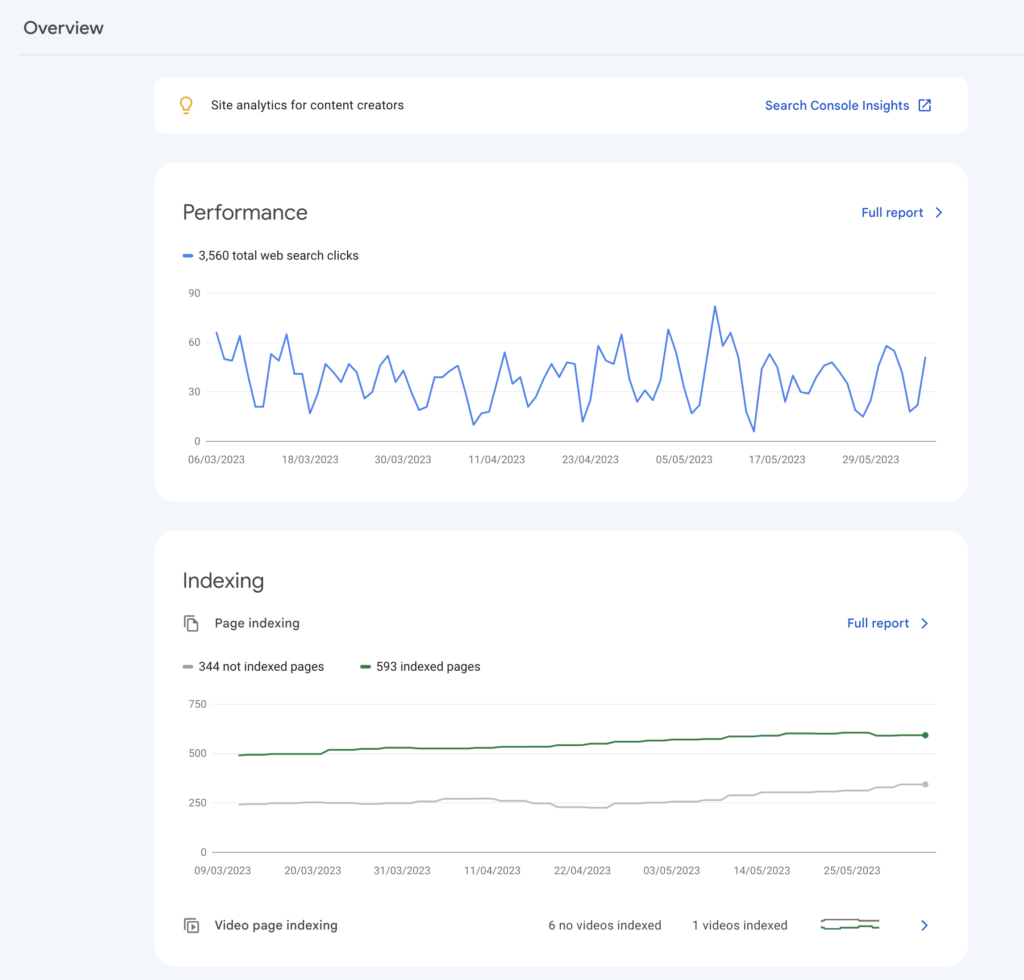
Performance: The Performance feature in Google Search Console provides insights into your website’s performance on search engines like Google. You can monitor impressions, clicks, click-through rates (CTR), and average positions for your pages and queries. This information helps you optimize your content and target the right keywords.
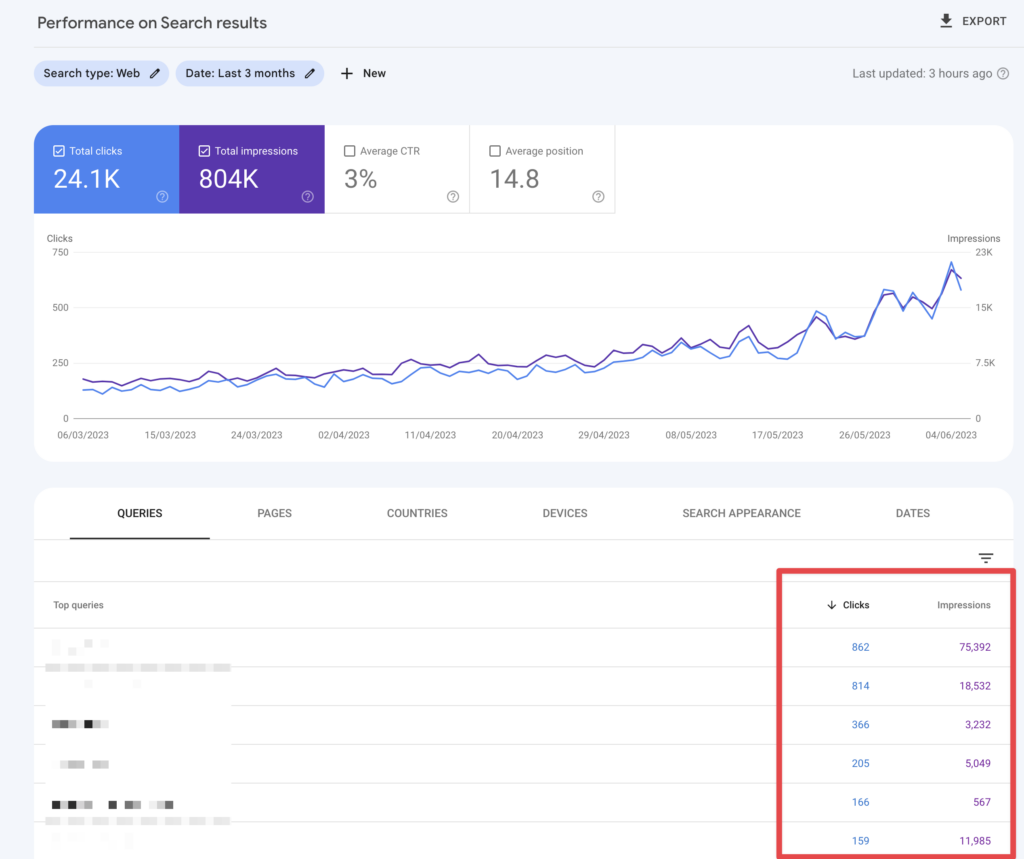
URL inspection: The URL Inspection feature in Google Search Console enables you to input a URL from your website and check its indexing status, any crawl or indexing issues, and even view the last crawl date and rendered version of the page.

It’s a great idea to manually submit pages for indexing if your site is new. This can help kickstart the process for the Google Index Bot to visit your site!
Indexing
Pages: The Coverage report under the Indexing section monitors your indexed pages, helping you identify any indexing issues or errors that might be affecting your site’s visibility in search results.

Video pages: The Video report within the Enhancements section tracks the performance of video content on your website, offering insights into video impressions, clicks, and CTR.

Sitemaps: The Sitemaps feature allows you to submit and manage XML sitemaps, ensuring that Google crawls and indexes your site’s pages efficiently.
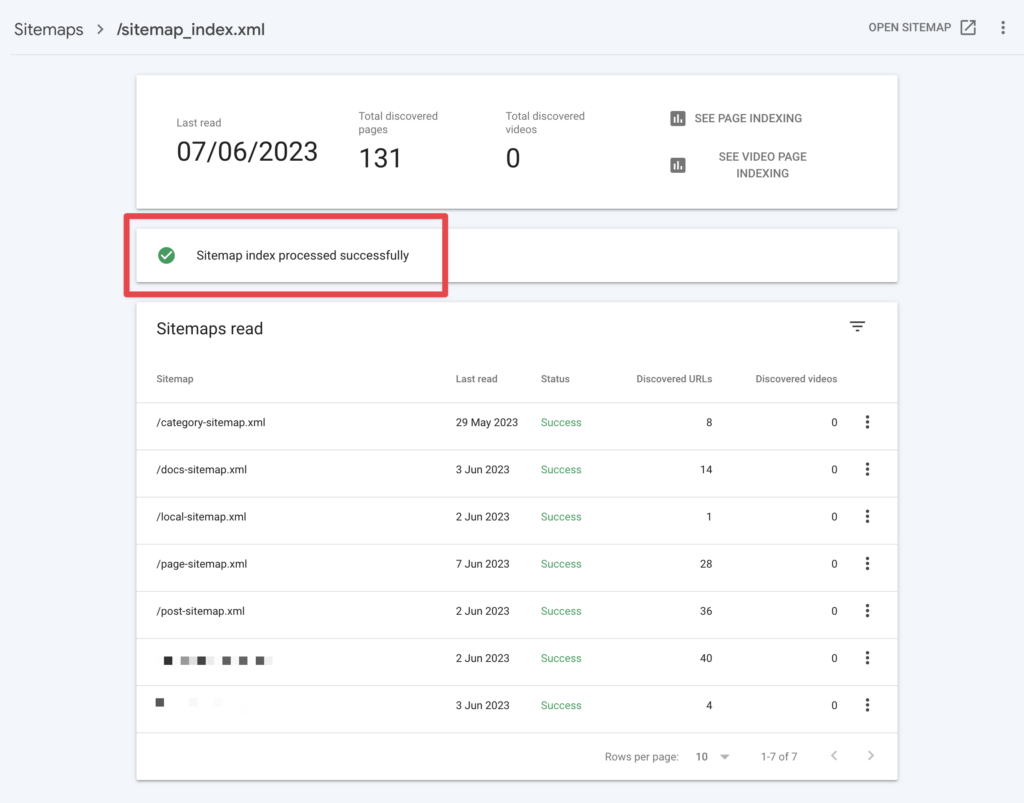
Removals: The Removals tool enables you to temporarily block URLs from appearing in Google search results, which can be useful when dealing with sensitive or outdated content.

Experience
Page experience: The Page Experience report assesses the quality of user experience on your site, considering factors like Core Web Vitals, mobile usability, and security issues.
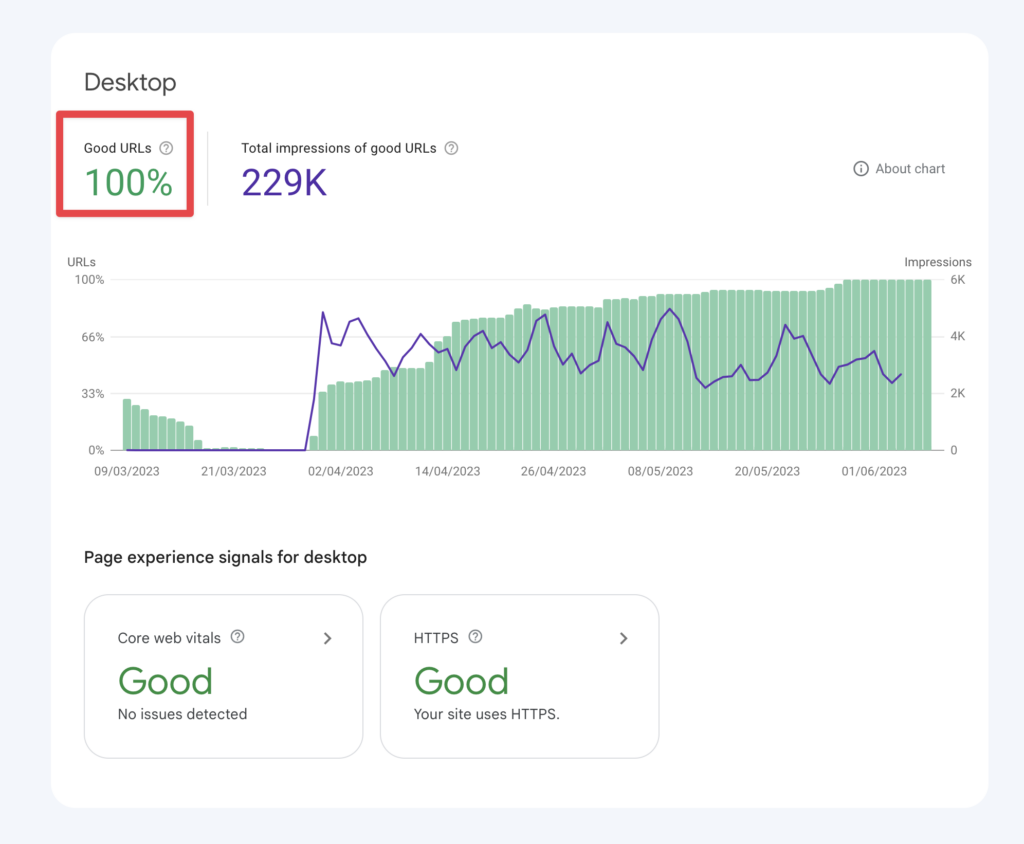
Core Web Vitals: The Core Web Vitals report evaluates your site’s performance in terms of loading speed, interactivity, and visual stability, which are critical for user experience and SEO.
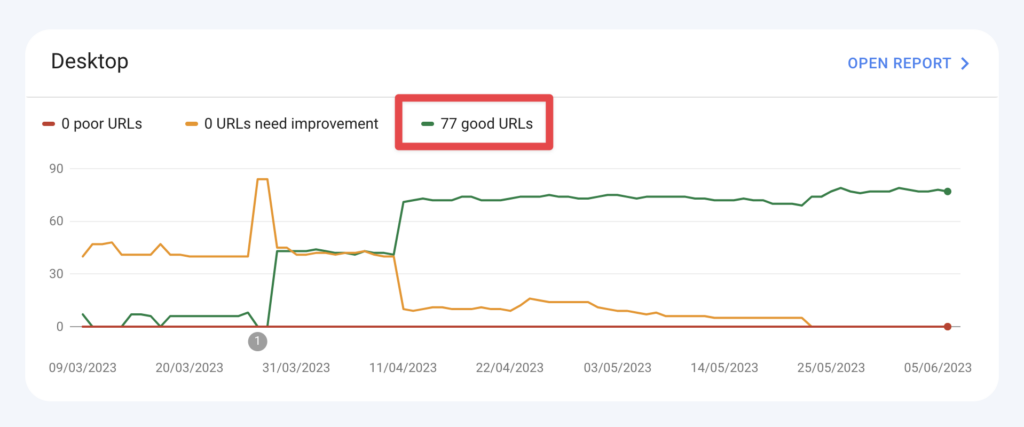
Mobile usability: The Mobile Usability report identifies and helps you fix any issues that might be affecting your site’s mobile-friendliness.
Enhancements
Breadcrumbs: The Breadcrumbs report helps you monitor and fix any structured data issues related to breadcrumbs on your site, ensuring proper navigation and improved search appearance.
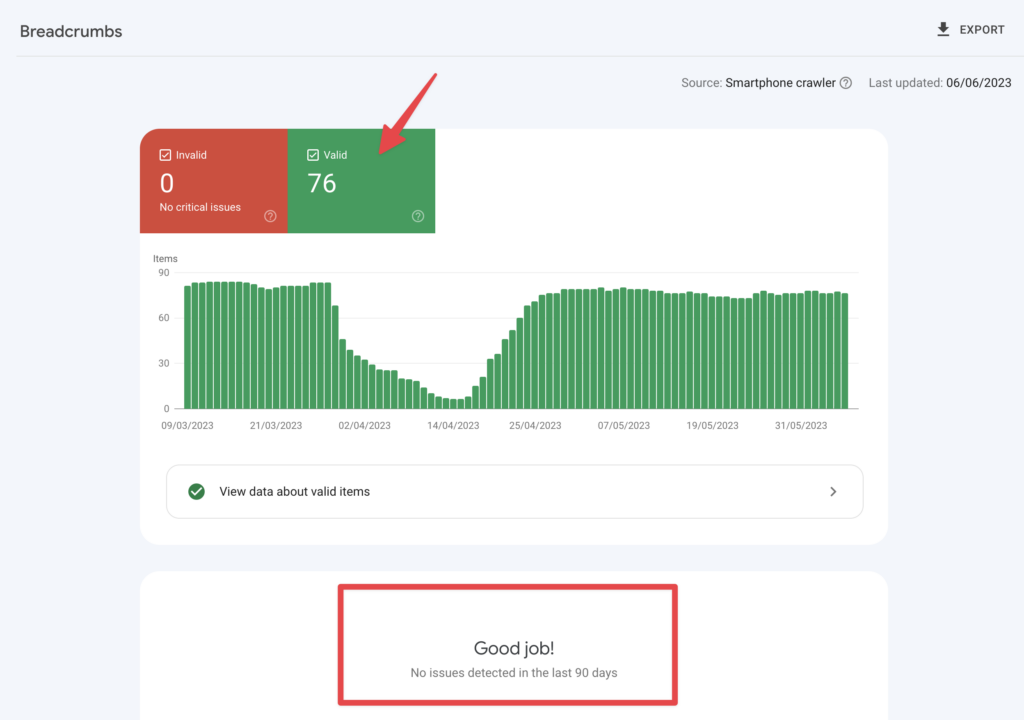
Sitelinks searchbox: The Sitelinks Searchbox report checks for any issues with the search box markup on your site, which can enhance your search result appearance with an embedded search box.
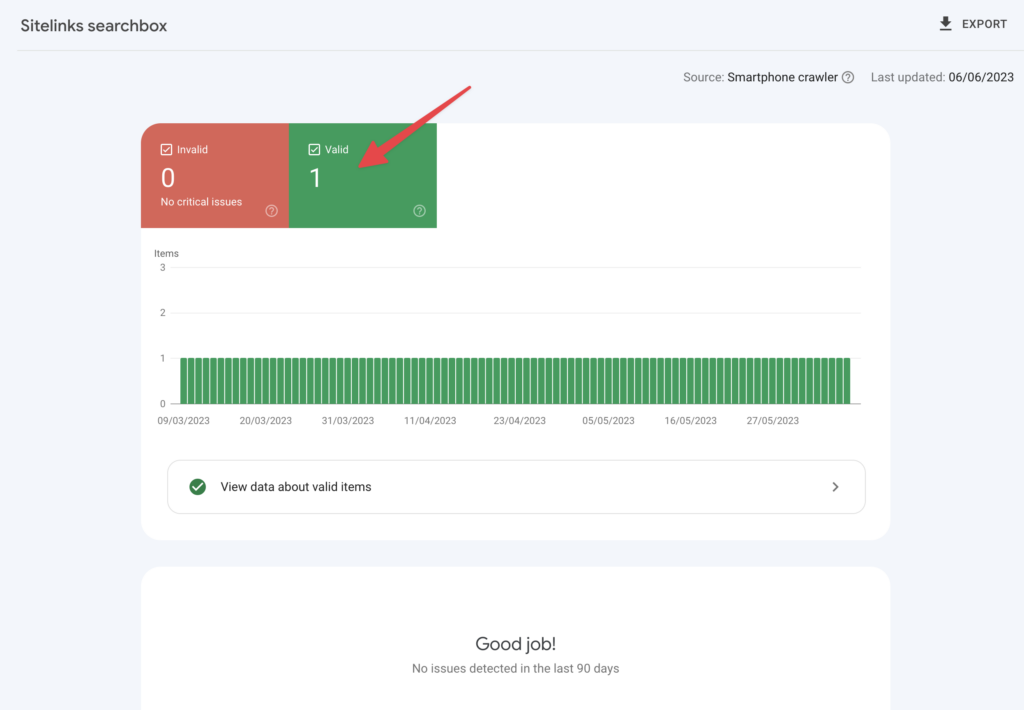
Videos: The Videos report, as mentioned earlier, provides insights into the performance of video content on your website, helping you optimize video metadata and improve visibility in search results.
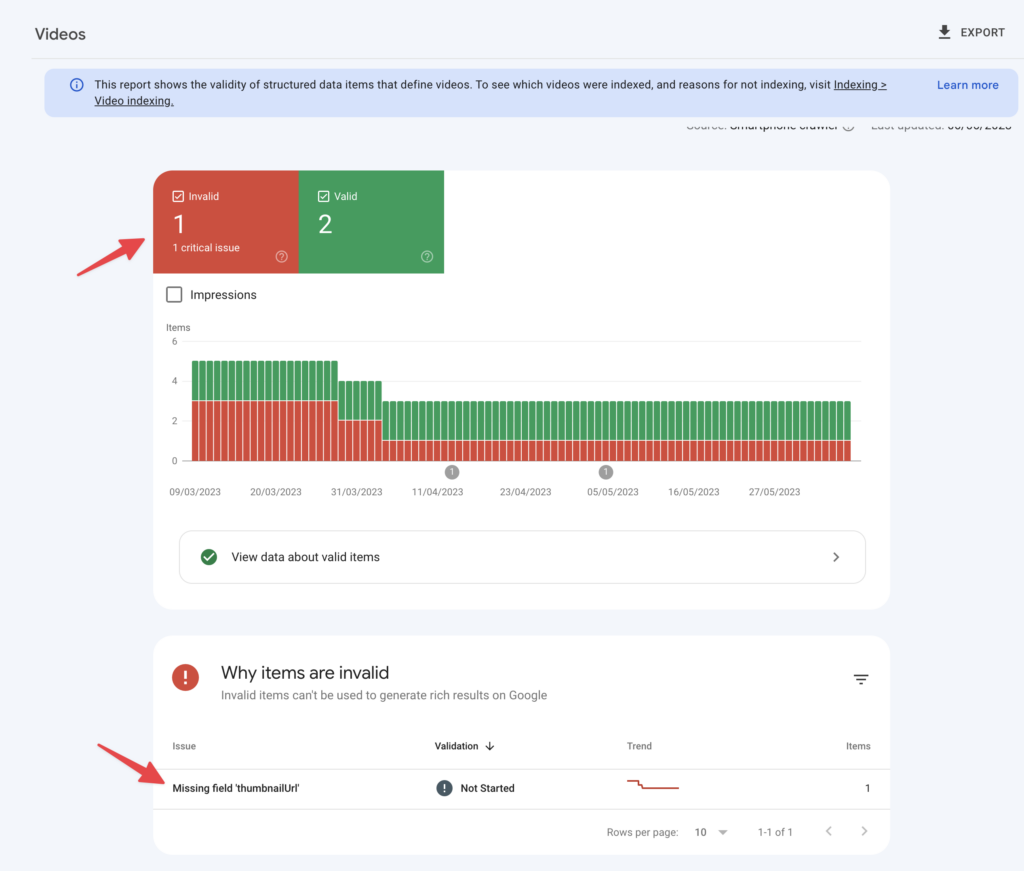
Monitoring and Improving On-Page SEO
Google Search Console can help you identify and resolve on-page SEO issues, such as:
- Crawl errors: Use the Coverage report to detect and fix crawl errors, ensuring that Google can access and index your content.
- Indexing problems: Monitor the indexing status of your pages and resolve any issues to improve search visibility.
- Duplicate content: Identify duplicate content issues and implement canonical tags or consolidate similar content into a single page.
- Missing or poorly optimized meta tags: Review your site’s meta titles and descriptions, and optimize them for target keywords and better click-through rates (CTRs).
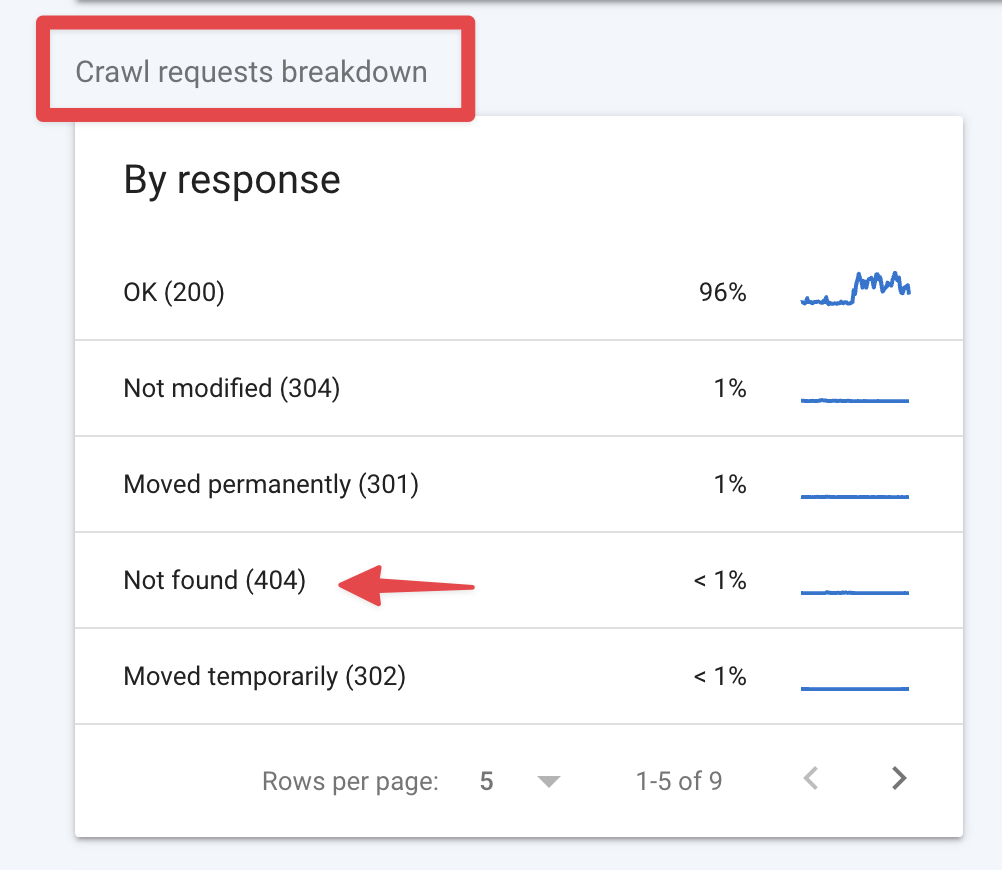
Enhancing Off-Page SEO with Google Search Console
GSC can also help improve off-page SEO factors:
- Analyzing backlinks: Use the Links report to analyze your site’s backlinks, identify high-quality link sources, and devise strategies to acquire more valuable backlinks.
- Monitoring external links: Keep track of your external links and disavow toxic backlinks that could harm your site’s SEO.
- Tracking internal linking: Assess your site’s internal linking structure to improve navigation, distribute link equity, and enhance user experience.
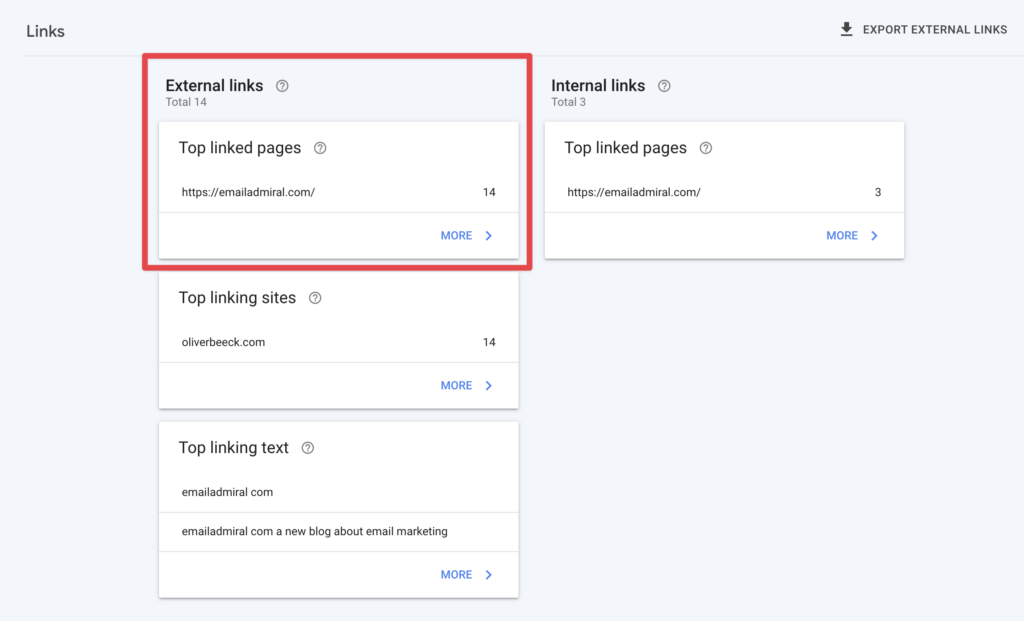
Leveraging Performance Reports for Keyword Optimization
The Performance report in GSC provides invaluable insights into your site’s visibility and performance in search results. Use it to:
- Identify high-performing keywords: Optimize your content around keywords that drive traffic and conversions.
- Discover new keyword opportunities: Uncover untapped keywords to target in your content strategy.
- Monitor CTRs: Improve meta titles and descriptions to increase organic traffic by enticing users to click on your search result listings.

Security and Manual Actions
A crucial component of Google Search Console is the ‘Security & Manual Actions’ feature. This section alerts you to any manual actions that Google has applied to your site due to perceived violations of its webmaster guidelines. Additionally, it notifies you of any security issues, such as hacking or malware, which could potentially harm your site’s users or its ranking in Google’s search results. By addressing these concerns promptly, you can maintain a secure and trustworthy website.
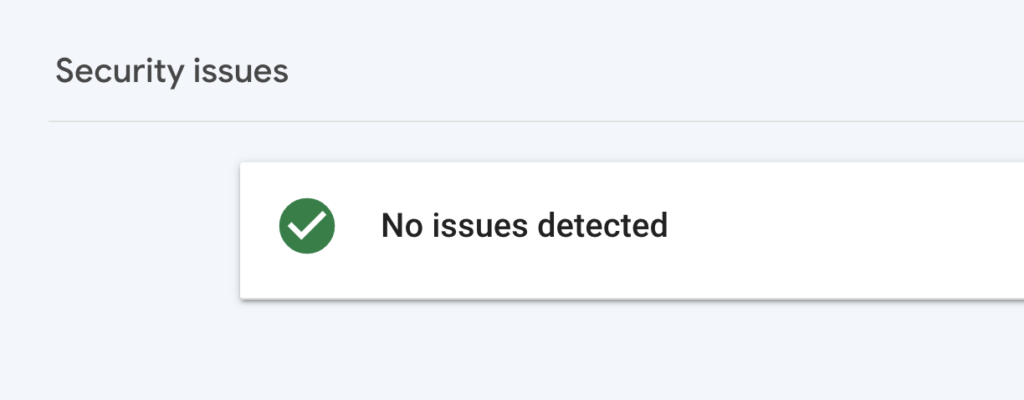
AMP (Accelerated Mobile Pages)
For websites utilizing AMP, monitoring AMP status and errors is essential for maintaining a mobile-friendly website. Google Search Console offers tools for monitoring and troubleshooting AMP pages, ensuring that your mobile users enjoy a seamless and fast browsing experience on your site. Although personally I don’t really like AMP and I’m sure it is going to be deprecated soon. It’s buggy, Analytics doesn’t work properly and I prefer to keep my content on my own platform.
Google Search Console Insights
In 2021, Google introduced Search Console Insights as a way to provide content creators and site owners with deeper insights into their content’s performance. Combining data from both Google Search Console and Google Analytics, this feature delivers a comprehensive overview of content performance, helping you make data-driven decisions to optimize your site’s user engagement.
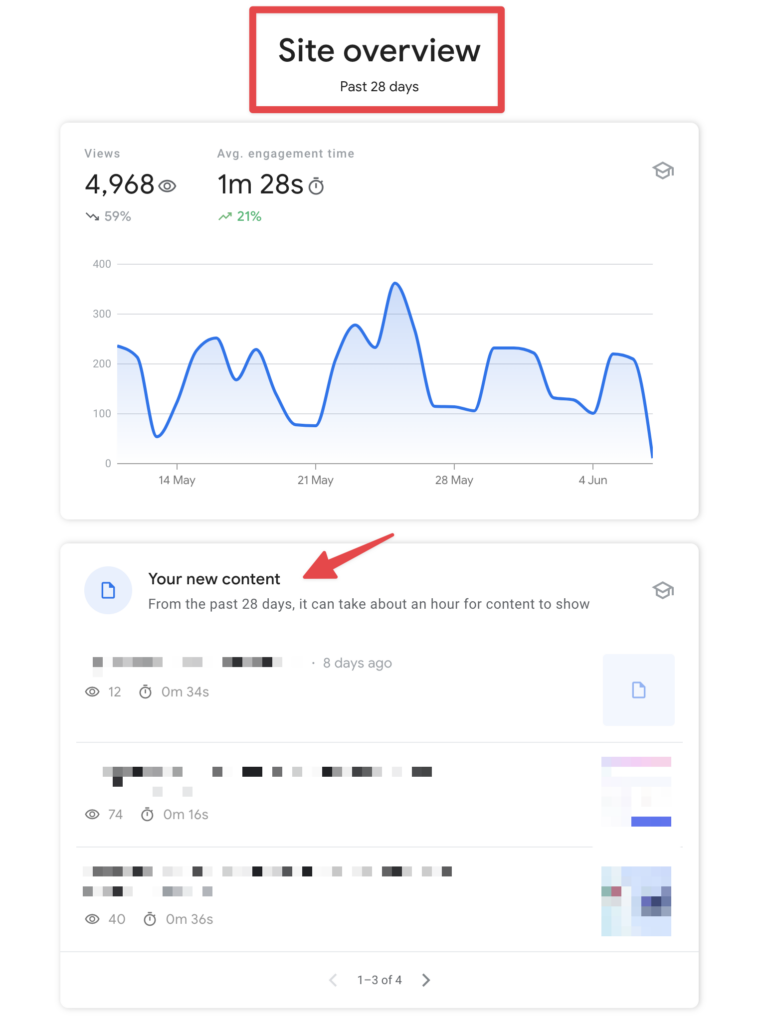
Data Export in Google Search Console
Google Search Console allows users to export data for further analysis. This capability is beneficial for those who want to examine the data using other tools or formats and gain additional insights. By exporting data, you can create custom reports, integrate with third-party analytics platforms, and dive deeper into your site’s performance metrics.

Google Search Console API
For advanced users, Google offers a Search Console API. This powerful resource enables developers to integrate Google Search Console data with other systems or custom applications. By leveraging the API, you can automate data retrieval, create custom dashboards, and streamline your SEO monitoring and optimization efforts.
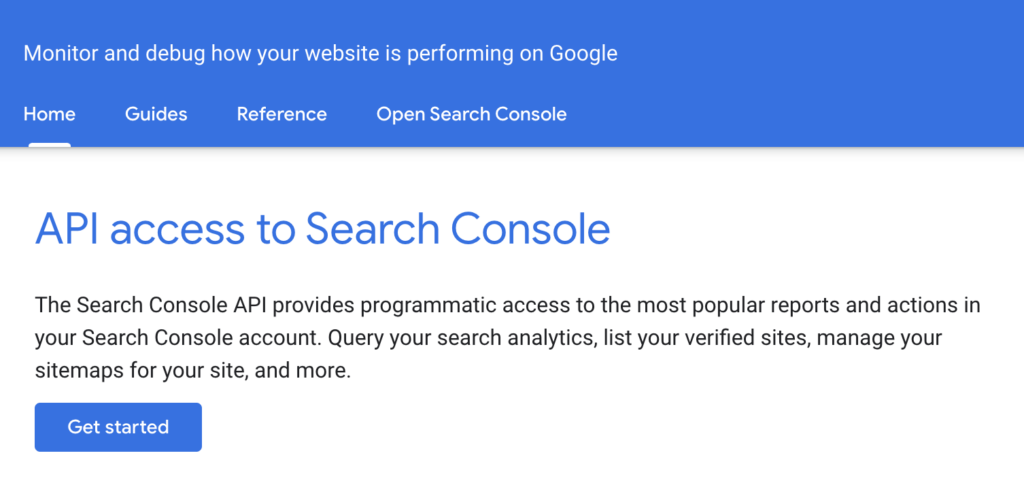
Staying Informed with Google Search Console Updates and New Features
As GSC continues to evolve, it’s essential to stay up-to-date with the latest updates and features. Follow industry news, blogs, and forums to stay informed on GSC developments and best practices.
For example: Google Search Console (GSC) is set to roll out a new update later this year that will remove core web vitals from its performance reports. Core web vitals are a set of metrics used to measure the page loading speed, visual stability, and interactivity of a website, which are important elements of user experience. I’m excited to see what their new ranking factors will be!
Conclusion: Google Search Console for SEO
Harnessing the power of Google Search Console for SEO in 2023 is crucial for website owners and SEO professionals alike. By setting up, verifying, and utilizing GSC’s key features, you can monitor and improve your site’s on-page and off-page SEO, drive organic traffic, and boost search rankings. And it’s free! Make the most of these strategies and stay informed about GSC updates to ensure your website’s continued success. Share your experiences with GSC or ask questions in the comments section below – we’d love to hear from you!

